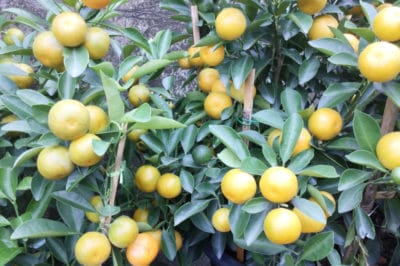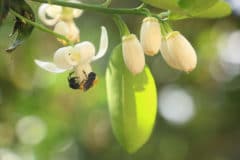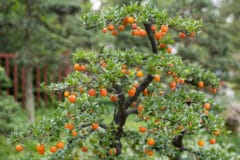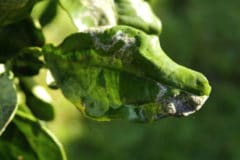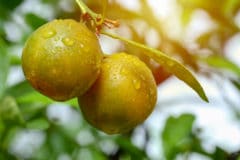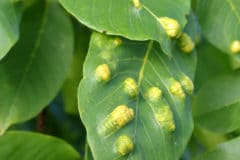The Orange-Friendly Climate
Orange trees thrive in tropical and subtropical regions where frost is rare. If you live in USDA plant hardiness zones 9 through 11, you have the climate needed to grow an outdoor orange tree.
How Much Cold Is Too Much Cold?
While they tolerate more cold than most other citrus trees, oranges do suffer damage when temperatures drop below 29°F (-1.7°C) for longer than 30 minutes. Ripe fruit withstands cold better than green fruit:
- Ripe oranges suffer damage at 25° to 29°F (-3.9° to -1.7°C).
- Half-ripe oranges suffer damage at 27° to 29°F (-2.8° to -1.7°C).
- Green oranges suffer damage at 28.5° to 29.5° F (-1.9° to -1.4°C).
Temperatures below 24°F (-4.4°C) damage or kill the entire tree.
Frost Protection
Give you tree up to 10°F (5.6°C) of extra frost protection by soaking its roots out to the dripline the day before frost is due. Then cover it with a lightweight frost cloth anchored with rocks.
Location and Soil
To maximize and outdoor orange tree’s flowers and fruit, plant it where it will get at least eight hours of daily sun. Give it well draining soil, preferably of sandy loam. If your soil has lots of clay, plant the tree on a gently sloping mound from 3 to 4 feet high to ensure good drainage.
Fertilizer
Mix 1 cup (250ml) of organic 5-2-6 citrus fertilizer into the soil at planting. Begin you regular fertilizing program after the tree adds 6 to 8 inches of vertical growth.
Fertilize three times yearly:
- Before the tree flowers in late winter.
- After it flowers in spring.
- To replenish the soil in September.
Scatter the label’s recommended amount of fertilizer granules out to the dripline and water well.
Watering
The most important factors determining how much water your tree needs are its size and the time of year. In midsummer, for example, a tree with a 10-foot canopy may need almost 15 gallons per day to support its developing fruit. During mid-December dormancy, it needs less than 2 gallons.
Always water slowly and deeply from the base of the tree out to the dripline. Let the top 6 inches of soil dry before watering again.
